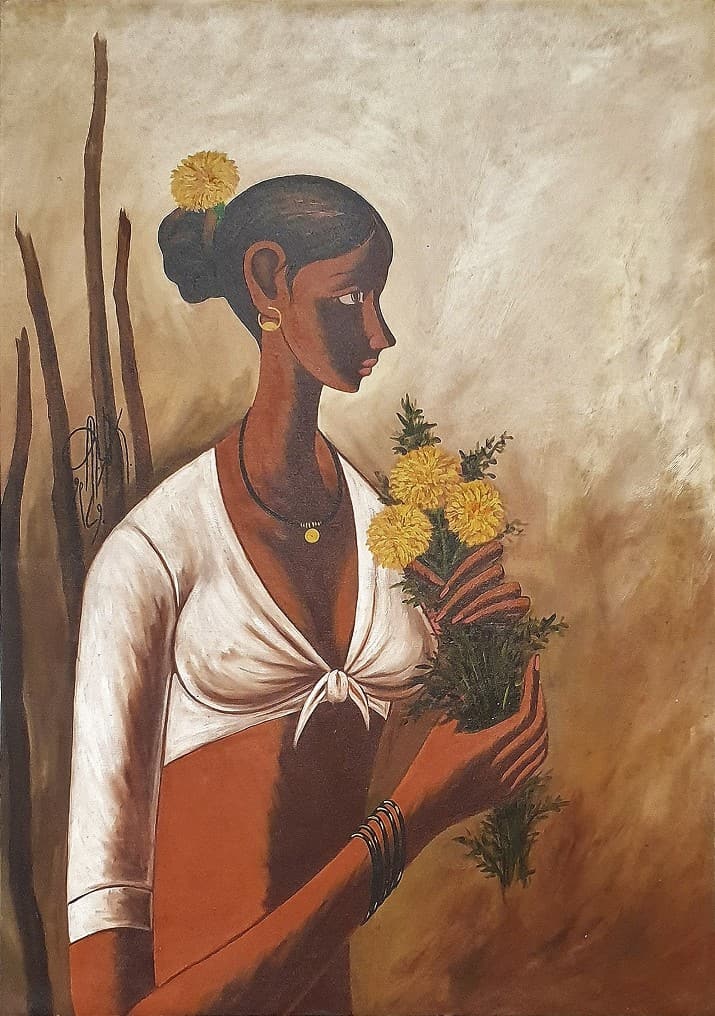Exploring Iconic Artists and Their Influences on Figurative Oil Painting
Exploring Iconic Artists and Their Influences on Figurative Oil Painting
Blog Article
Understanding the Art of Metaphorical Oil Painting: Important Tips and Techniques for Aspiring Artists
Figurative oil paint represents an intricate intersection of strategy and analysis, demanding a detailed comprehension of human makeup, composition, and shade theory. An expedition of color consistency and appearance methods can dramatically boost the visual influence of their work.

Recognizing Human Anatomy
Comprehending human makeup is basic for any artist aspiring to grasp metaphorical oil paint. A comprehensive grasp of the human form enables artists to produce realistic depictions that reverberate with visitors. Expertise of physiological frameworks, such as joints, bones, and muscular tissues, provides important insight into how the body moves and positions.
Artists need to familiarize themselves with the proportions of the human number, including the relationship in between different body parts and how these percentages differ throughout sexes and ages. This understanding allows for exact scaling and viewpoint in their job. Furthermore, comprehending the underlying musculature improves the ability to illustrate motion and tension in a figure, causing an extra compelling and dynamic composition.
Examining anatomy additionally helps in recognizing refined nuances in pose and expression, which are essential for communicating feeling and story within a paint. Resources such as anatomical textbooks, life illustration sessions, and on-line tutorials can be vital devices for musicians looking for to grow their anatomical knowledge. Inevitably, grasping human makeup not just improves technological skill however additionally enriches an artist's innovative vision, allowing them to bring their figurative oil paints to life with authenticity and deepness.
Value of Structure

Key principles of make-up include equilibrium, unity, and centerpieces. Attaining equilibrium ensures that no single aspect bewilders the others, while unity develops a feeling of consistency throughout the item. Focal factors attract focus to significant elements of the artwork, enabling audiences to engage with the narrative or style extra deeply.
In addition, using leading lines and the regulation of thirds can significantly enhance make-up. Leading lines normally lead the visitor's stare with the paint, while the rule of thirds offers a framework for positioning key aspects in a visually enticing fashion. By grasping structure, striving artists can raise their metaphorical oil paints, changing them right into compelling aesthetic stories that resonate with their target market.
Mastering Shade Theory
Color concept works as a basic facet of metaphorical oil painting that enhances the principles of structure. Comprehending the color wheel, which includes key, additional, and tertiary colors, is vital for creating unified combinations and reliable visual narratives.
Key principles such as color, value, and saturation play a vital function in determining the state of mind and effect of a painting. Artists must check out awesome and cozy shades to stimulate details emotions; warm shades usually share power and passion, while awesome colors can impart calmness and harmony.
The relationship between complementary shades-- those contrary each various other on the color wheel-- can develop striking contrasts and vibrant structures. When juxtaposed, these colors improve each various other's vibrancy, drawing the customer's eye and including deepness to the art work.
Moreover, comprehending analogous shades allows artists to accomplish a sense of unity and coherence. By choosing colors that are adjacent on the wheel, one can keep a balanced atmosphere throughout the item.
Ultimately, understanding shade concept furnishes aiming musicians with the devices essential to adjust shade deliberately, boosting their capability to share why not try these out emotion and story via figurative oil paint. figurative oil painting.
Techniques for Texture
A range of strategies can properly create structure in metaphorical oil painting, adding depth and measurement to the art work. One fundamental method is the usage of impasto, where thick layers of paint are put on the canvas, enabling a three-dimensional top quality. This strategy enhances light communication, creating vibrant aesthetic rate of interest.
One more approach is scumbling, which involves applying a slim layer of lighter paint over a dried darker layer. This strategy permits the underlying shade to reveal with, causing a soft, textured result that can stimulate a feeling of ambience or age. Dry cleaning is likewise essential; using a dry brush with minimal paint, musicians can develop fragile structures and fine lines, perfect for capturing the nuances of skin or textile.
In addition, palette blades can be utilized to scuff or figurative oil painting apply paint, generating Check Out Your URL special patterns and textures. Trying out different devices and products, such as sponges or rags, can even more enrich the textural top quality of a painting. Ultimately, understanding these strategies needs technique and experimentation, permitting musicians to find the diverse responsive top qualities that can raise their metaphorical jobs.
Developing Your One-of-a-kind Style
A musician's special style is commonly the conclusion of individual experiences, affects, and techniques sharpened in time. Developing this uniqueness in figurative oil paint needs an aware effort to discover both your inner self and the more comprehensive creative landscape. Begin by assessing the motifs and subjects that reverberate with you emotionally; your enthusiasm will infuse credibility into your job.
Research study numerous designs and motions, yet instead of mimicing, essence components that talk to you - figurative oil painting. Try out various strategies, color combinations, and structures, permitting on your own the freedom to play without the pressure of perfection. Keep a sketchbook or journal to document your thoughts, ideas, and creative development; this will certainly act as a useful resource for recognizing repeating motifs and preferences
Seek useful feedback from peers or coaches, as they can provide insights that illuminate aspects of your work you may ignore. Go to workshops and events, submersing on your own in the art neighborhood to additional fine-tune your viewpoint. Last but not least, be patient with on your own; the trip of creating an one-of-a-kind design is continuous, evolving with each brushstroke and every canvas you come across. Accept the procedure as high as the result, and your distinctive voice will arise.

Final Thought
Understanding metaphorical oil paint necessitates an extensive understanding of human composition, make-up, and shade concept. Accepting these fundamental concepts will substantially profit aiming musicians on their imaginative trip.
Metaphorical oil paint stands for a complex intersection of technique and analysis, requiring a thorough comprehension of human anatomy, composition, and shade theory. An expedition of color harmony and appearance techniques can substantially improve the visual impact of their work. By understanding make-up, aspiring artists can raise their metaphorical oil paintings, transforming them into engaging aesthetic tales that reverberate with their target market.
Experiment with various methods, color schemes, and structures, enabling yourself the freedom to play without the stress of excellence.Mastering metaphorical oil paint requires an extensive grasp of human makeup, structure, and color concept.
Report this page